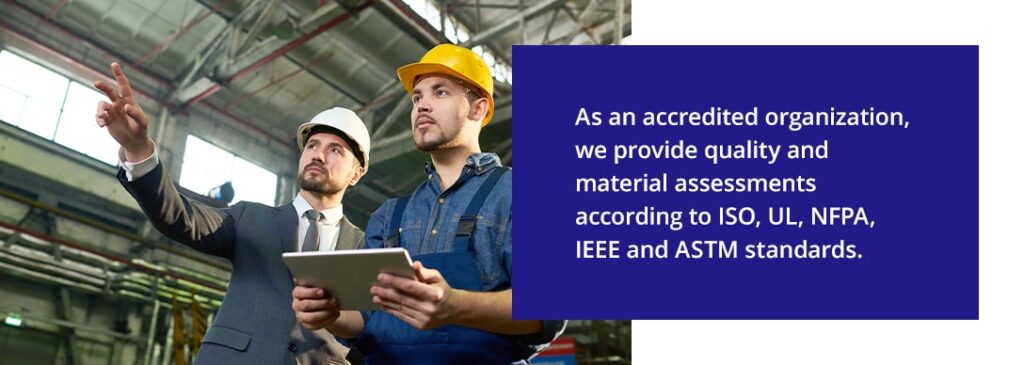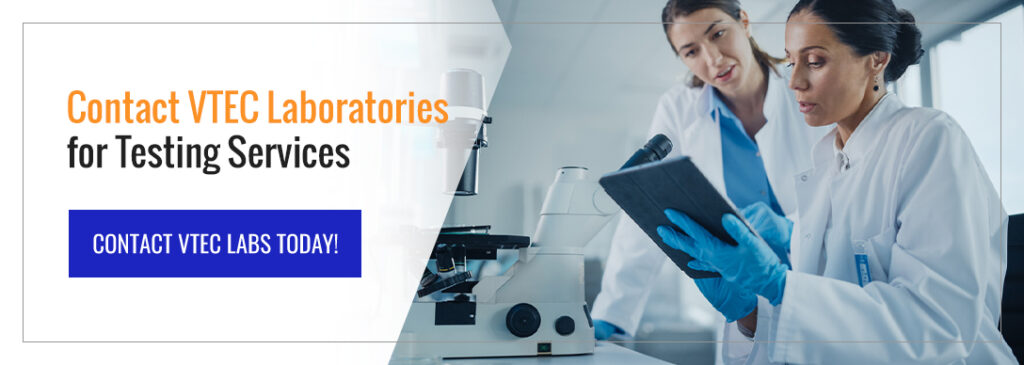EN 45545 Test
Trains carry hundreds of thousands of people daily, making it essential for them to remain safe for passengers, engineers and operators. By conducting proper railway safety tests, you can effectively reduce train safety risks while stopping accidents before they occur.
Because trains and other rail vehicles are confined spaces, fire hazards are particularly dangerous for passengers and staff. To ensure manufacturing products and materials are safe for use on railways, standards like EN 45545 are used for fire safety testing.
EN 45545 Railway Fire Protection Test
The EN 45545 is a railway fire protection test created to standardize fire and smoke systems on trains and other railway vehicles. These standards officially became mandatory across Europe in 2016, and all manufacturing materials for rail vehicles must adhere to EN 45545 testing.
EN 45545 was created to replace various fire safety standards across European countries to ensure the railway network had corresponding standards. This implementation unified standards across the continent and continues to improve railway safety and network interconnection. A single fire safety code is also more cost-efficient to maintain.
EN 45545 standards keep railway passengers and staff safe by minimizing the risk of fire and controlling the development speed and size of fires if they occur. EN 45545 applies to all rail vehicles, including high-speed, regional and double-decker trains. These standards apply to all materials used in railway vehicle manufacturing, ensuring your fire safety measures are current.
Your EN 45545 Testing Partner
At VTEC, we work with various industries to deliver high-quality fire, chemical and wear testing options. As an accredited organization, we provide quality and material assessments according to ISO, UL, NFPA, IEEE and ASTM standards. With our standard and custom tests, you can enhance safety and ensure compliance during industrial applications.
VTEC will gladly serve as your EN 45545 testing partner if you work with railway systems. We have extensive experience testing railway components, and our high level of expertise helps us maintain your productivity.
While our flammability and material tests typically take about two weeks to complete, we also have faster options for last-minute situations. Our thorough tests cover all the necessary components to ensure your railway system remains in secure working order. If you're looking for a provider that can facilitate EN 45545 tests efficiently and reliably, we offer the capabilities you're looking for.
Operation Categories for EN 45545 Testing
EN 45545 testing standards classify railway vehicles according to factors like vehicle type, operation and infrastructure. There are four operation categories overall, and each depends on service and infrastructure characteristics:
- OC1: The first operational category is for railway vehicles that operate on infrastructure where they stop with minimum delay and can reach a safe area immediately.
- OC2: The second category is for vehicle operation in underground sections, tunnels or elevated structures. Passengers can evacuate from the side, and rescue stations can be reached within a short running time.
- OC3: The third operational category includes vehicles operating in underground sections, tunnels or elevated structures. There are side evacuation options for passengers, and the vehicle can reach a place of safety within a long running time.
- OC4: The fourth vehicle operational category is for operation in tunnels, underground sections or elevated structures where side evacuation is unavailable. The vehicle can access a place of safety within a short running time.
EN 45545 standards also classify rail products according to 26 requirements depending on where materials will be used. These application requirements indicate desired performance criteria and what danger level or fire hazard is associated with an application. Rail vehicles can be classified as one of three danger levels depending on how far the vehicle travels in tunnels, whether it's manual or automatic, whether it has stories and whether it has sleepers.
What Are the EN 45545 Testing Procedures?
Manufacturers and testing agencies can use the above categories and classifications to determine what EN 45545 test procedures each product or material needs to undergo. Testing can begin once the testing requirements for a specific product are known. Rail vehicle products and materials must meet EN 45545 standards for given requirements to be considered safe for use in the rail system.
EN 45545 testing procedures aim to ensure every rail system has the resources and security measures to offer protection against common risks. Fire, smoke and gases are particularly dangerous in confined spaces, and using the proper railroad safety measures helps keep passengers and staff safe.
EN 45545 testing procedures use multiple criteria to assess the safety of rail components, such as:
- Heat
- Toxicity
- Likelihood of combustion
- Smoke
After testing, the materials are ranked based on the results. The results are shared in a report, indicating whether the material was approved or not.
EN 45545-2 Testing Methods
EN 45545-2 is the second part of these standards, outlining stricter requirements for various interior and exterior products, furniture, and mechanical and electro-technical equipment, including seats, cables and flooring. Any adhesives and sealants used in these products must also comply with these performance requirements.
EN 45545-2 specifies test methods, conditions and constraints for product fire reactions. Products must react a certain way to be considered safe for use in a train. The main parameters measured are flammability, flame spread, heat release, toxicity and smoke opacity.
This section of requirements includes 27 testing methods, each with its own performance criteria. For example, here are a few testing methods and their criteria:
- Oxygen index: Determines the minimum oxygen concentration that allows a material to flame.
- Flash and fire points: Determines the temperatures and pressures at which petroleum products ignite and burn.
- Smoke density test: Measures smoke density generated by specific materials when exposed to a heat source. The toxicity of the gases produced in the smoke is also tested in the FTIR Toxicity Gas Analysis.
- Horizontal flame spread of floorings: Measures the critical heat flux of flooring systems to determine how fast the flame would spread across the floors.
- Ignitability of bedding items: Determines the afterburn time of bedding items.
Once products pass the series of applicable tests, they're approved for use in trains under EN 45545-2 standards.
Contact VTEC for Your Testing Needs
VTEC's custom testing services are an effective way to help industry leaders uphold strict safety standards. Our fast turnaround times and fire safety testing solutions allow you to keep railway passengers and operators safer. For more information, we invite you to request a quote or contact us today!
Learn More About VTEC Services
At VTEC Laboratories, our role as a multi-functional company stems from our more than three decades of experience. Due to our extensive expertise in multiple industries, we provide comprehensive services that meet each field’s unique standards, needs and objectives.
Learn more about our services by contacting us online or calling us at (718) 542-8248.


